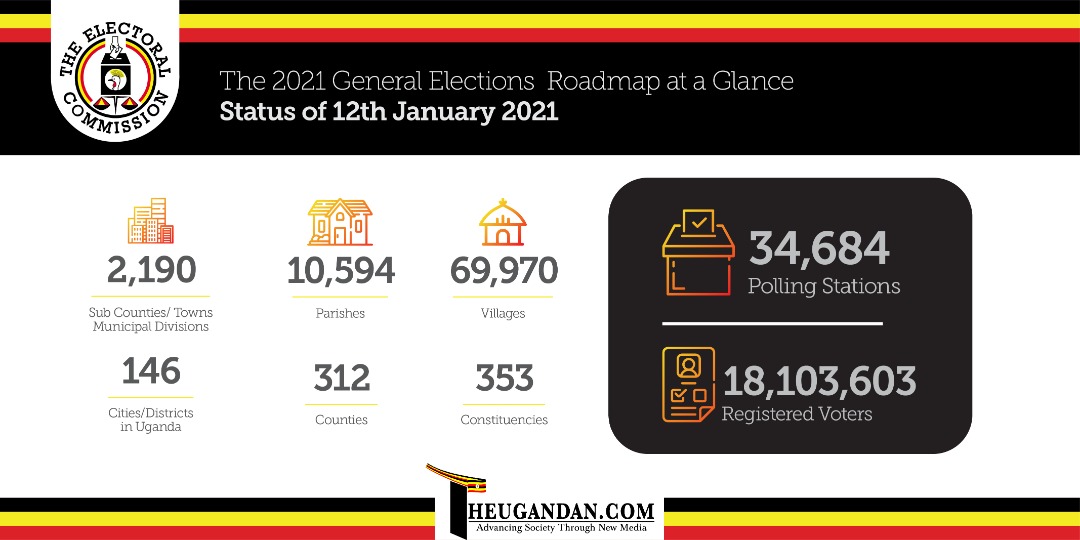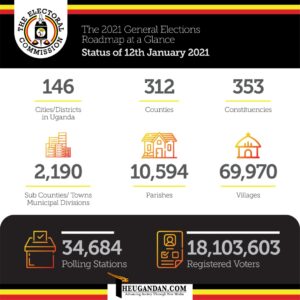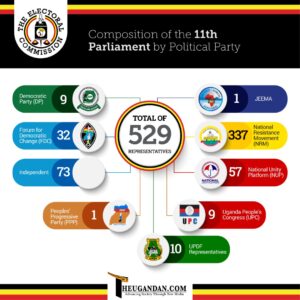The growing appetite for Uganda to borrow externally and domestically will adversely affect Uganda’s development in the long run, a new State of the Economy for September 2020 released by the Bank of Uganda (BoU) last week has revealed.
According to the report produced by BoU’s Research and Policy Directorate, Uganda’s total public debt stock (in nominal value) stood at Shs56.526 trillion, 40.8 percent of GDP, as at end June 2020 which is an increase of 20.5 percent relative to June 2019.
“The increase between June 2019 and June 2020 was mainly due to a UGX6,362.3 billion increase in external debt largely attributed to borrowings from the IMF, Trade and Development Bank (TDB), and Stanbic Bank towards countering the economic distress brought about by the COVID-19 pandemic,” the report reads in part.
The report adds that public external debt continued to maintain the dominant share of 66.2 percent of the total public debt. External and domestic debt increased by 18.0 percent and 19.4 percent, respectively in FY2019/20.
“Despite the increase in borrowing, Uganda’s debt levels remain sustainable with low risk of debt distress; however, significant vulnerabilities are evident,” the report warns.
Although the multilateral creditors have put in place facilities to dampen the adverse effects of the COVID-19 pandemic, the report says, uncertainties relating to the ensuing expenditure pressures, subdued economic activity and declining tax revenues, and a possible further decline in grants could lead to further borrowing on non-concessional terms.
“The associated increase in interest payments will be a substantial drain on resources that could have otherwise been used to finance development,” the report further warns Uganda.
Slowed Economic Growth
It should be noted that Uganda’s economy significantly slowed in FY2019/20, precipitated by the direct and indirect impacts of lockdown measures to prevent the spread of COVID-19.
“Economic growth remained subdued, as real gross domestic product (GDP) grew by only 3.1 percent compared to 6.8 percent in FY2018/19. The high growth momentum posted in the first half of FY2019/20 was revered in the second half of the financial year due to the impact of the COVID-19 pandemic,” the report says.
Quarterly GDP released by UBOS estimates a contraction in FY2019/20 that is, a growth of minus 3.2 percent in the quarter to June 2020, down from minus 1.7 percent in the quarter to March 2020.
“The quarterly GDP estimates are consistent with the BoU Composite Index of Economic Activity (CIEA) which grew by minus 6.2 percent in the quarter to June 2020, compared to 1.4 and 1.7 percent in the quarters to March 2020 and June 2019 respectively. The contraction in activity was mainly on account of low performance in the services and agricultural sectors which declined by declining by 6.1 and 1.1, respectively, during the quarter to June 2020,” the report says.
However, high frequency indicators point to economic recovery in June and July 2020 following the easing of the lockdown in May 2020.
It adds that as the easing of the lockdown continues, the economy is expected to slowly recover, reflecting the effects of a slow rebound in both foreign and domestic demand and, subdued confidence on the part of households and firms.
“Many consumers are expected to be hesitant to resume their previous spending patterns, partly due to fears of contracting the virus and uncertainty about earnings,” the report says.
It adds: “Moreover, even those whose incomes were not affected may increase their need for precautionary savings. Furthermore, low exports of goods and subdued tourism receipts are projected to continue to weigh on economic growth given weaker global demand. Therefore, economic growth in Financial Year (FY) 2020/21 is projected in the range of 3.0-4.0 percent, further increasing to 5.0- 6.0 percent in FY 2021/22.”
The report further reveals that economic growth is consequently expected to remain below the potential growth rate until FY 2022/23.
Economic Outlook
The economic outlook is extremely uncertain, largely because of the unpredictable intensity and duration of the pandemic, says the report.
“The downside risks to the economic growth projection include the possibility of a widespread and possibly more severe second wave of the virus, requiring a complete lockdown, as well as, the locust invasion. Moreover, Uganda remains highly vulnerable to recurring episodes of global financial volatility, stemming either from continued global economic weakness or the uncontrolled spread of the COVID-19 pandemic,” the report says, adding: “In addition, increasing Non-Performing Loans (NPLs) and high lending interest rates could delay recovery of Private Sector Credit (PSC) extensions to pre-COVID levels.”
On the upside, the report says, economic growth could turn out stronger than projected if the spread of the virus is contained, or if a vaccine or an effective treatment is available earlier than is currently being assumed.
“Such a scenario could lead to greater business and consumer confidence, factors which would likely lead to stronger economic growth,” the report says.












